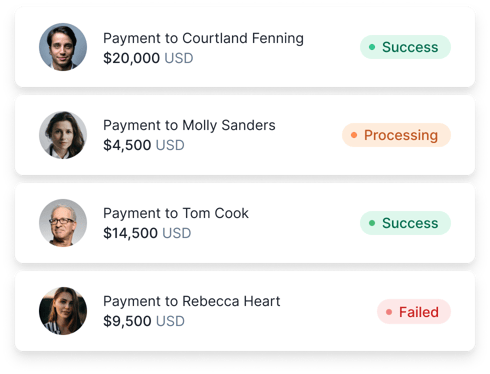Thursday, September 9, 2021
For cities, rainwater has long been public enemy number one. Urbanization and an increasingly complex infrastructure, with an expanding amount of traffic, have led to a big challenge for...
Lorem ipsum dolor sit amet consectetur, adipisicing elit. Ipsa libero labore natus atque, ducimus sed.
Thursday, September 9, 2021
For cities, rainwater has long been public enemy number one. Urbanization and an increasingly complex infrastructure, with an expanding amount of traffic, have led to a big challenge for...
Lorem ipsum dolor sit amet consectetur adipisicing elit. Possimus magnam voluptatum cupiditate veritatis in, accusamus quisquam.
Lorem ipsum dolor sit amet consectetur adipisicing elit. Pariatur minima sequi recusandae, porro maiores officia assumenda aliquam laborum ab aliquid veritatis impedit odit adipisci optio iste blanditiis facere. Totam, velit.
Competitive exchange rates
Lorem ipsum, dolor sit amet consectetur adipisicing elit. Maiores impedit perferendis suscipit eaque, iste dolor cupiditate blanditiis ratione.

Lorem ipsum dolor sit amet consectetur adipisicing elit. Impedit ex obcaecati natus eligendi delectus, cum deleniti sunt in labore nihil quod quibusdam expedita nemo.
Mobile notifications
Lorem ipsum, dolor sit amet consectetur adipisicing elit. Maiores impedit perferendis suscipit eaque, iste dolor cupiditate blanditiis ratione.
Mobile notifications
Lorem ipsum, dolor sit amet consectetur adipisicing elit. Maiores impedit perferendis suscipit eaque, iste dolor cupiditate blanditiis ratione.

Thursday, September 9, 2021
For cities, rainwater has long been public enemy number one. Urbanization and an increasingly complex infrastructure, with an expanding amount of traffic, have led to a big challenge for cities when it comes to rainwater: how do we get rid of it as quickly as possible? Rising temperatures add an even larger sense of urgency to this problem: it will increase uncomfortable living conditions in the cities we live in. Extreme weather events are following one another in rapid succession, with heavier showers and sometimes even floods as a result with long warm and dry periods in between. Cities are struggling more than ever to deal with extreme amounts of rainwater.
So the solution for fighting climate change and heat stress seems simple: plant trees in cities. We definitely should, but there’s one big bottleneck: space. As much freedom and space as trees have in forests and other green areas, they struggle in urban environments. Especially in busy city centers. Trees need space to grow, above ánd below the ground. But the existing infrastructure and the need to keep building new homes for the growing population don’t allow them.
At Wavin, we found a solution for that: Wavin TreeTank®. A system consisting of modular units installed around a void where the tree will be positioned. After the tree is planted, it will be anchored and pipework is installed for irrigation and ventilation. The Wavin TreeTank system allows the roots with water and access for air nutrients. Because of this the roots get the space they need to grow and branch out. At the same time, the system acts as a barrier against the roots causing damage at the ground level, like pavements and the pipework. In this short video, the working of TreeTanks is very well explained.
Luckily, we see that landscape architects and city authorities realize how much good greenery can do for a city. More and more city planners recognize the importance of investing in sustainable development. The United Nations also challenges cities to grow more trees in cities with their trees in cities challenge in which they aim to localize action to help urban authorities to control surface water, reduce air conditioning needs and more in their cities. Scandinavian and in particular Danish cities are in full swing as well. The canopy - the percentage of trees - within a city environment is an important pillar for these city governments as they understand how much more well grown trees can do for a city in regard to heat stress and other climate issues. By 2030, the City of London aims to have 10% more green coverage, similarly Brussels is aiming for 17%. The French government has passed legislation requiring canopy in the cities to be above a certain percentage, and the mayor of the country’s capital has made it a top priority to create an urban wood in Paris.
If we want to build future-proof cities, the shift towards a greener environment is inevitable. So we’re happy to see the tide is turning and more and more cities are open for change. Wavin is committed to the urban green movement and is collaborating with towns and cities all over Europe to plant trees. Like in the city of Hasselt, in Belgium. Our Wavin TreeTank made it possible for the municipality to plant 86 large trees in the Quartier Bleu district. To date, 2500 cubic meters of material for the tree tanks has now been delivered and assembled. After this pilot case, in 2019, we’ve scaled up our activities with 11 projects to date across Europe (Germany, Netherlands, Denmark and Ireland)
Next to dealing with rainwater, energy reduction and climate control, there’s one impactful - and possibly quite surprising - side effect that should not be overlooked when it comes to trees. Wim Vandecauter, Business Development Manager at Wavin: “Trees are causing house prices to rise up between 5 to 18%. You can look at this financially, but it indicates the social character of a tree. The tree is a reference point, a social meeting place. Trees are air filters, provide shade and last but not least: people love to see a fully grown tree nearby house.”
Simply put: people love trees. So let’s give them some love back. Investing in greener environments leads to a nicer place to call home: a future proof city.
Topics: SEA News